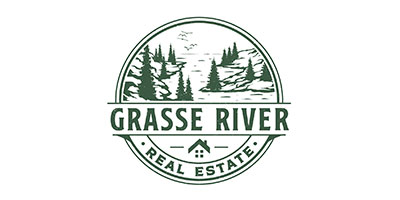Here are five remodeling “future-proofing” tips that experts recommend.
- Beef up your home’s insulation – Today, there are multiple forms of insulation, many promoted as “green,” including soy-based foams, loose-fill cellulose (recycled newsprint) and denim. Go for the highest R-value (thermal resistance) — typically, the bigger the number, the better the insulation — you can afford and fit with proper installation. Pay particular attention to exterior walls, basements and attics. Batt or blanket insulation is often cheapest; fiberglass is still widely used. The main drawback is that batts must be trimmed to fit around pipes and fixtures, leaving spaces susceptible to air leaks. Loose-fill insulation made of fiberglass and cellulose can flow better around wires, pipes and other obstructions. Spray-in, expanding foam insulations do a particularly good job at this and don’t settle or sag over time, though are often pricier because of the materials’ high R-values. Many are urethane-based, but some now substitute petroleum content with soybean material. “Fill the cavity any time a wall is open,” says Bruce Harley, author of “Insulate and Weatherize.”
- Use formaldehyde-free kitchen cabinets – Inquire whether materials contain added urea formaldehyde, which is used in the adhesives of certain pressed-wood products, including those used to make kitchen cabinets. Formaldehyde has been classified as a human carcinogen by the World Health Organization, and the National Cancer Institute recommends that “buyers should ask about the formaldehyde content” of such products. The Formaldehyde Council Inc., a group of formaldehyde producers and users, says that at the low levels to which people are exposed there “is essentially no risk” and that formaldehyde-based products are harmless when used as directed. However, starting this year, California began regulating formaldehyde emissions from composite wood products sold in the state. More mainstream wood-product manufacturers are adjusting product lines. Armstrong World Industries Inc. is developing a line of cabinetry boxes with no added formaldehyde. Columbia Forest Products Inc., a large manufacturer of formaldehyde-free hardwood plywood, has organized a network of green fabricators to make it easier to find products like cabinets and furniture built without formaldehyde. “Consumers are asking for products that don’t emit VOCs into their kids’ rooms or kitchens, and that are made with environmentally accountable materials,” says Todd Vogelsinger, Columbia Forest Products’ director of marketing.
- Consider a tankless water heater or going solar – On-demand, or tankless, hot-water heaters fire up only when you turn on the hot-water tap. As water runs through the heater, it’s warmed instantly by an electric or gas-fired mechanism. Such appliances are considered more efficient in many cases than standard water-heater tanks, which continually consume energy to heat and store water you don’t use most of the day. Meantime, a growing number of homeowners are enlisting the sun to help heat their water. U.S. installations of solar water-heater systems nearly tripled between 2005 and 2007, and some states, such as Hawaii, are beginning to mandate them in new homes. What’s more, residential solar water-heating systems can qualify for a 30% federal tax credit, while qualified tankless hot-water heaters can earn up to a $1,500 federal credit; there also may be state incentives.
- Build a media room that’s ready for the future – Make sure it’s designed to meet the future of home technology. Can wiring support a centrally located media-distribution system that feeds Internet access, movies, games and music to the rest of the home? Can you control lighting, security and heating and air conditioning from a touch-screen or remotely from a cell phone or PDA? Gone are the days of just making sure you have enough outlets to run the stereo, TV and DVD player. Fast-advancing home-automation technology in every aspect of life means that one day, refrigerators and other appliances will be more efficient and interconnected to relay problems to homeowners or central repair databases. General Electric Co., for one, now sells an Energy Monitoring Dashboard that tracks home indoor energy and water consumption and emissions and can be integrated with solar technology, thermostats and music to pipe throughout the house. With 76 million baby boomers beginning to approach retirement, home tech will increasingly communicate with outside health-care providers. And it all will require proper planning and wiring to prevent information overload. While the upfront costs can be more, it can pay off to hire an electronic-residential-design professional to plan along with your contractor.
- Use low- and no-VOC paint and finishes – Products that contain few or no VOCs are one of the fastest-growing segments of the $21 billion paint and coatings market. VOCs are solvents that disperse into the air as paint dries, and have long been used to help it spread evenly and adhere to surfaces. But VOCs, which are largely responsible for that new-paint smell, can contribute to smog as well as kidney and liver damage, respiratory and memory problems and other illnesses, particularly in children. While you don’t need to rush out to repaint if your walls are in good shape (most VOCs dissipate after 30 days), homebuyers increasingly are asking if these coatings have been used in residences. Plus, low-VOC paints are generally healthier for your family while painting is going on. They typically cost the same as regular paints or just a few dollars more per gallon. You can also find low-VOC water-based urethane finishes for wood flooring. Some states, such as California, have already strictly limited the VOC emissions of paints sold there, and the federal government is expected to propose tightening its restrictions later this year.

